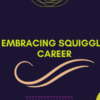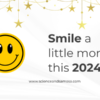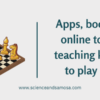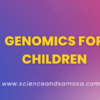Embracing Squiggly career

In the upcoming years, characterized by artificial intelligence, disruption, creativity, innovation, and rapid change, as well as personal obligations, layoffs, and obstacles, a corporate ladder-based job may not be the best option for maintaining a successful career. Be willing to embrace the ‘Squiggly Career’.
The term was coined by career development consultants Helen Tupper and Sarah Ellis in their 2020 book, ‘The Squiggly Career’ and then this year it was further affirmed by LinkedIn CEO Ryan Roslansky.

What it means by ‘Squiggly career’
A squiggly career is characterized by change, ambiguity, and possibility. It all comes down to accepting change, pursuing a variety of interests, and being receptive to new chances in a squiggly career. According to Helen Tupper, There is no one-size-fits-all definition of success in any field. Achievement is unique, just like you. A squiggly career path does not imply that you will never work for another organization again. It indicates that receiving the next salary hike or getting promoted to vice president, director, or senior isn’t what drives you. Rather than focusing on what others expect of you, you investigate new options based on your interests and goals.
The biggest benefit of adopting a squiggly career is that you’ll be able to take advantage of any opportunities or obstacles that come your way without feeling guilty or stressed. Furthermore, taking the new route would only enhance your prior knowledge. This way, you could include all of your career pivots in your profile without worrying about what the recruiting manager would think of your previous position or work in between.
My Squiggly career in a glance
(Sharing this specifically to motivate women who have to at some stage prioritise their family over career)
I became a bioinformatician after earning my master’s degree in science. After five years, I felt that I needed to have a better grasp of client needs and business operations. As a result, I quit and finished my international business management program. Then went back to work for the same company. After two years, work-from home became necessary due to family responsibilities (something unheard of in the 2012 period). Spent four years working as a consultant for a few businesses and learned a lot about data analysis (took several of John Hopkins’ Coursera courses on the subject). I then launched my blog, “ScienceandSamosa,” to have a platform of my own to share the insights I had acquired about healthcare and data science over the years. I’ve been blogging for seven years, and throughout that time, I’ve learned a lot about writing, content, and creativity. I was able to be a part of digital health from its infancy during this time since I worked as a digital marketing specialist for a variety of tech and healthcare organisations. The COVID era then arrived, during which I championed digital health tools and apps as a member of my new organisation. The demand for genomics, the subject in which I began my career and have years of expertise working for clients throughout the world, was rising at the same time. The field of genomics is like “home” to me. With my experience in data science, content creation, building business relationships, and working with real patient data it has become easier for me to handle my new role. I’m currently experimenting with applying LLM and AI to genomics in conjunction with real patient data from EHR systems. There is more to come. 2024 promises to be a lot more challenging, but I’m always up for something new.
Closing statement: Continuous Learning is the key to having a successful ‘Squiggly career’
A key component of a squiggly career is that we need to be constantly open to learning new things from the ground up and being willing to “unlearn.”






